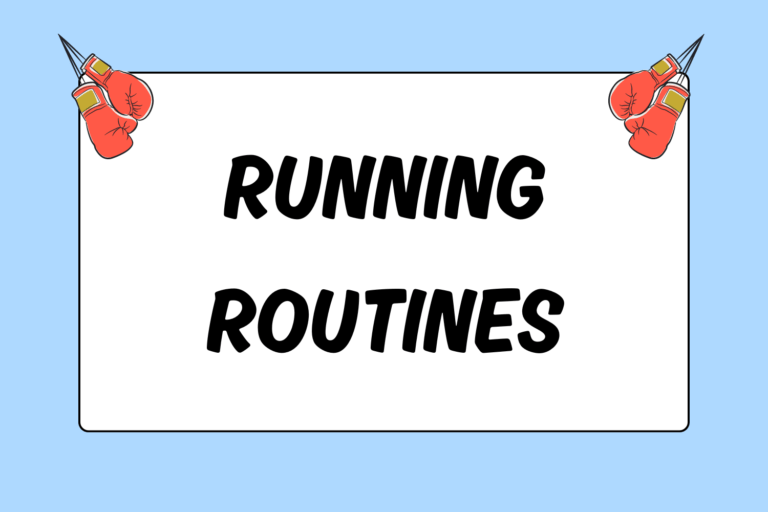Now that you understand the mechanics of different punches, you can begin sequencing your blows. In boxing lingo, these sequences are referred to as “combinations.” Throwing several punches in a row intensifies your workouts and increases the probability that your punches will land on an opponent. This guide touches on the importance of combinations and introduces you to some of the most popular boxing combos.
Increasing the Odds
Successful boxers throw effective combinations. Defending swarms of incoming punches is difficult for boxers at any level, so the odds of landing punches on an opponent dramatically increase when you throw your punches in succession.
Combinations play an important role within all boxing styles. Sugar Ray Leonard used combinations to overwhelm opponents with blistering speed. Power punchers like Mike Tyson conceal their knockout shots within a series of punches. Combos are also essential in amateur boxing when punch quantity – not quality – serves as the primary scoring factor.
Fluidity
In order to throw successful combinations, you must be able to throw fundamentally sound punches. Review the basic punches: The jab, cross, hook, and uppercut. Constantly review the form of all individual punches. Work on staying balanced and shifting your weight from one movement to the next throughout your combinations.
Every punch you throw puts you in a position to comfortably throw another punch. For example, your back hip twists forward and your weight shifts to your front foot when you throw a cross. A left hook naturally follows a cross for orthodox boxers while a right hook naturally follows a cross for southpaws. The hook thrown by the lead hand generates a great deal of power when you push off your front foot, rotate your lead hip inward, and shift your weight to your back foot. The cross puts you in the right position to twist in this fashion.
Basic yet Effective Combinations
Trainers designate numbers for each punch. By assigning a number to each punch, combinations can quickly be called out for execution. Numbering can change slightly, but the first three punches are universal:
- 1 = Jab
- 2 = Cross
- 3 = Hook with the lead hand
Numbers 4 through 6 vary among different trainers, but generally include a hook with the rear hand and both uppercuts.
Jab Combinations
A combination is simply a series of punches thrown in succession. The series can include several different punches, but it also can be the same punch thrown several times in a row. 1-1 or 1-1-1 can terrorize an opponent when thrown consistently throughout a bout. You usually react to a jab by parrying it or slipping out of the way, but defense becomes much harder when the jab arrives several times in a row. If you catch your opponent leaving his hand out after a parry, throw several jabs in a row and the last one will almost surely land. Jab combinations are the simplest form of combination and serve as the anchor for more intricate combinations.
Jab, Cross
The 1-2 combination plays a significant role in any boxer’s arsenal. The jab distracts the opponent for a split second, allowing you to throw a powerful cross down the middle. Many fighters merely tap the opponent’s glove with the jab and throw a powerful cross behind it. In ideal circumstances, the jab will knock the head of the opponent back so he won’t even see the cross.
You can also throw a 1-2-1-2 in order to throw the opponent off and score points very quickly. Make sure that you are balanced at all times, though, and bring your hands back to their original position as quickly as possible. You want to limit the opportunity for counterattack.
1-2-3
You can add a hook if you want to advance your 1-2 combo. Use the left hook if you’re an orthodox boxer and the right hook if you’re a southpaw. As mentioned before, the hook naturally evolves from the ending position of the cross, so this punch should not be difficult to add to the combination as long as you’re balanced and in full control of your body.
Do not cock your cross or hook. Do your best to be fluid with your motions and let the power develop over time. You can easily add power once you have more control over your punches.
2-3-2
The cross, hook, cross combination works especially well if you’re a southpaw fighting an orthodox boxer or vice versa. In any case, this combination often surprises an opponent that expects an incoming jab as your lead punch.
Start slowly when first incorporating this combination. Both the cross and the hook are power punches, so your weight distribution and hip rotation are paramount. Once again, remind yourself not to cock these punches, but throw them in succession with fluidity.
Faces of Boxing: Robert “Bam Bam” Hines
Height: 5 feet, 11 inches
Weight: Junior Middleweight
Record: 25-3-1
Stance: Southpaw
Getting to know Hines: Robert Hines had a tremendous amateur boxing career that included 178 wins and only 11 losses. He turned professional in 1981, and in 1988 he won the International Boxing Federation Junior Middleweight Championship against Matthew Hilton. Born in Philadelphia, Hines earned the nickname “Bam Bam” due to his quick combinations. He overwhelmed opponents with his southpaw stance and swift, accurate hands. “Bam Bam” finished his professional career with 17 knockouts.
Advancing Your Combinations
You should also integrate basic defensive maneuvers when practicing your combinations. For example, throw a 1-2-3 combination and weave under an imaginary hook. After you weave, do your best to counter with another combination; at the very least throw a jab.
Advanced combos naturally develop as you become comfortable with the combinations described above. You can shadow box or hit the heavy bag while practicing one combination at a time. As you get started, focus your efforts on quality over quantity. If you make it your goal to improve the quality of each individual punch within a combination, the combination as a whole will be much better. Work hard, but be patient as your skills develop.





